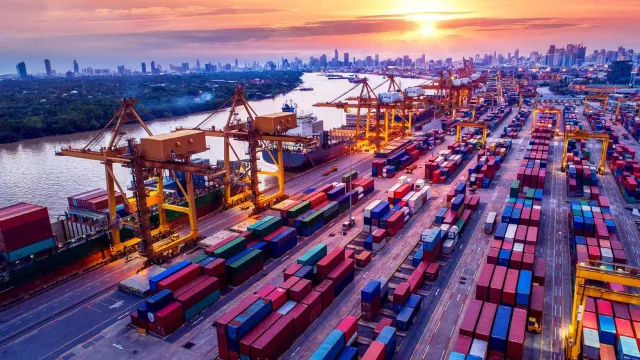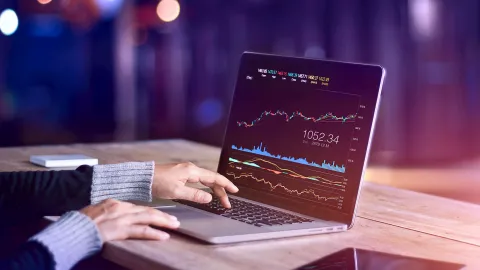Navigating market dynamics and macroeconomics shifts in global trade finance

While 2024 was a record year for trade flows and volumes, with services outpacing goods, 2025 has begun with a degree of uncertainty and many questions about the future.
Dominique Honoré, Global Head of Global Trade & Commodities at Crédit Agricole CIB, explains that these questions will include those around trade corridors and tariffs - as well as how these will impact countries that interact with other nations globally.
“We are expecting some impact on supply chains, plus the ways in which strategic suppliers transact with the USA,” says Dominique. “Our main role will be to adapt and remain flexible as a bank to work alongside our clients to face this climate, and - potentially - new risks, using trade finance.”
The road ahead for regulation
One of the other big trends to be aware of in global trade and trade finance is forthcoming regulation. Saila Alapiha, Senior Product Owner at OP Financial Group, says that one of the most important discussions is happening around the Model Law on Electronic Transferable Records (MLETR).
“It aims to provide digitally native transport documents, which is crucial in the current situation when trade corridors are changing and new ones emerging,” she explains. “The old paper documents are not going away, and there are now parallel streams of paper and digital documents that can create problems. Where there are new counterparties, people tend to fall back on what’s definitely working.”
The global trade industry wants to see more certainty and fewer surprises in legislation, says Saila. However, while many countries including the UK, France, Germany and the USA have either adopted or are planning to adopt the MLETR, there are still some holdups with the adoption of other relevant regulation including Basel 4.
How will technology support progress in trade?
Dr. Maria Mogilnaya, Trade Finance Advisor at CargoX explains that the two key jurisdictions to adopt MLETR are the UK and France, and that their action will have a big multiplication effect on other regions of the world, but that some surprising factors can come into play.
“Once you look at the ecosystem of digital trade, you realize that it’s not just about allowing an electronic document to be processed and accepted,” she explains. “You also need to look at data storage, because some countries do not allow cloud data storage, and insist on local storage, which prohibits the adoption of digitalization.”
It means that service providers who can make electronic documents available in a specific country need to have extra resources put aside just for data storage.
Some of the national committees of the International Chamber of Commerce (ICC) are pushing for governments to make the use of legal entity identifiers (LEIs) mandatory to support a registry of companies like the UK’s Companies House.
An LEI could then be used in multiple ways, from customer onboarding to checks and credit risk assessments.
“That would really help SMEs because one of the reasons they don’t get access to financing is because their information is not easily accessible for assessment,” says Maria. “Financial institutions have a role to play in pushing reforms like MLETR and LEIs along with the ICC and recipient countries to enable the legal environment governing electronic documents.”
Anastasia McAlpine, Head of Product Management, Trade & Supply Chain Finance at Finastra agreed that servicing SMEs is currently expensive compared with dealing with higher end corporates.
The question is whether digitalization will be a helpful lever to support more SMEs within the trade industry. Maria points to a 2022 report by McKinsey that looked into the digitalization of trade which concluded that $40 billion in new trade volume could potentially be unlocked by removing friction, especially in areas such as custom clearance.
Dominique agrees that there is a huge opportunity to close the finance gap for SMEs, and that her bank aims to facilitate the lending process for such companies, given they are often short-staffed and short on resources.
“We already have some products like supply chain finance where we onboard suppliers that are usually SMEs, and this provides funding at a lower cost than they can access locally,” she says.
The role of AI in trade finance
One of the reasons why it can be more expensive to service SMEs is that they use the same processes to apply for trade finance as big corporates, which means banks need to expend as much effort and resources to process a small transaction as it does for a large one.
AI could potentially offer promising solutions, which can be used to read through multiple documents to save hours of processing time. AI could also be used to address knowledge gaps created by trade finance professionals retiring or leaving the industry.
“The average age of trade finance professionals in the US is 65,” says Maria. “A lot of those people are going to be document checkers looking at letters of credit, and when they retire that knowledge will be gone.”
There are technologies and document checking utilities that can be plugged into core trade finance platforms, and banks could take the opportunity to redesign their document checking processes and redeploy staff as product or customer managers.
Having up-to-date technology will also help attract younger people to work in a bank, adds Dominique, and the end result could well be a change in the skills needed to work in trade finance, pivoting from knowledge about paper-based processes to today’s rapidly digitizing environment.
For progress to really accelerate, technology companies, banks, government bodies and port authorities need to collaborate more closely, concludes Anastasia: “In order to attract the brightest talent we all need to look at how technology can be a bigger part of the day-to-day processes involved in trade finance. There’s a bright future for trade finance if we all pull together.”






